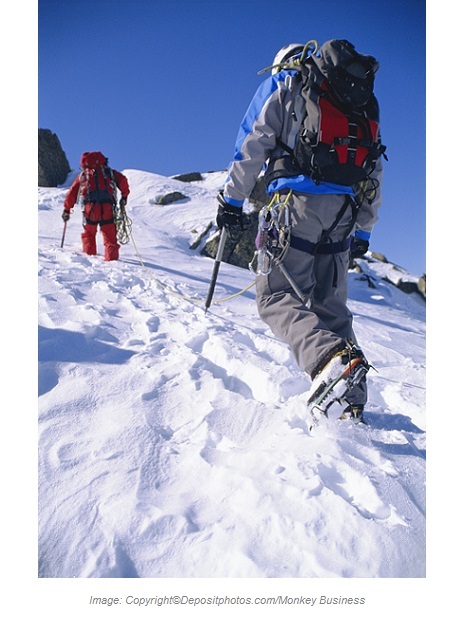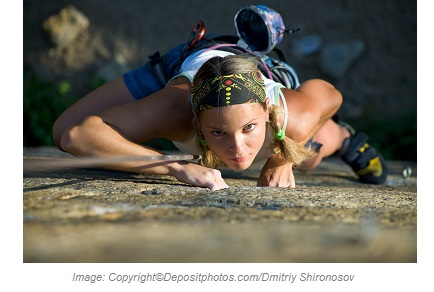 skiers, mountain climbers, and hikers. It occurs due to a decrease in oxygen content of the arterial blood at high altitudes.
skiers, mountain climbers, and hikers. It occurs due to a decrease in oxygen content of the arterial blood at high altitudes.As altitude increases, atmospheric pressure and the partial pressure of oxygen in the arterial blood decrease, leading to a constellation of symptoms called “mountain sickness”.
Mountain sickness demonstrates itself as one of the following conditions:
- Acute Mountain Sickness (AMS).
- High-Altitude Pulmonary Edema (HAPE).
- High-Altitude Cerebral Edema (HACE).
- Chronic Mountain Sickness (CMS; Monge`s Disease).
Risk factors for developing mountain sickness at high altitude are:
- Climbing too fast too high.
- Lack of pre-altitude exposure.
- A previous history of mountain sickness.
- Exertion.
- Concussion within the past 6 months.
- Survivors of the second impact syndrome (SIS).
Acute Mountain Sickness (AMS):
AMS is the most common form of mountain sickness. It is experienced by most people at altitudes of 2500 m (8000 ft) within 4 to 12 h after ascent and subsides in 24 to 48 hours. Some may develop at altitudes as low as 2000 m (6500 ft).
Being common at ski resorts, AMS is characterized by headache, nausea, vomiting, dizziness, fatigue, loss of appetite, insomnia, and swelling of the hands and feet.
High-Altitude Pulmonary Edema (HAPE):
HAPE is an accumulation of fluid in the lungs and typically develops 24 to 96 hours after rapid ascent to 3000 m (9500 ft) and is responsible for most deaths due to mountain sickness.
Symptoms of HAPE include severe headaches, severe fatigue, increased breathing and heart rates, shortness of breath even at rest, dry coughs, low grade fever, and cyanosis.
High-Altitude Cerebral Edema (HACE):
Affecting about 1% of people climbed to altitudes about 2700 m, HACE is the swelling of the brain. It is characterized by intractable headaches, severe fatigue, confusion, disorientation, staggered gait, drowsiness, and loss of consciousness.
Chronic Mountain Sickness (CMS; Monge`s Disease):
CMS can develop after an extended time (months and years) living at a high altitude and it is characterized by severe fatigue, drowsiness, cyanosis, confusion, coughs, shortness of breath, and chest pain.
Approach to Mountain Sickness: 
The best approach to mountain sickness is to prevent developing it. Altitude acclimatization reduces the risk of developing mountain sickness. In AMS, descent is the simplest measure. If the person is at altitudes of 8000 – 10000 ft, it is recommended to descend 1000 ft daily. And if the person is at altitudes of over 10000 ft, he/she should descend 500 ft daily.
If you are susceptible to develop mountain sickness or you cannot avoid rapid ascending, it is strongly recommended you see your doctor to prescribe you “acetazolamide” for AMS prevention. You should start taking acetazolamide 250 mg every 12 hours from one day before ascending to one day after.
Descending to low altitudes and supplemental oxygen are effective for HAPE, HACE and CMS.
Nutritional Supports for Mountain Sickness:
The following nutritional recommendations may help with mountain sickness:
- Ginkgo Biloba (containing 24 – 32% flavonoids and 6 – 12% terpeniods): 240 – 480 mg a day. It contains flavonoids (quercetin and myricetin) and terpenoids (ginkgolides and bilobalides) that improve blood circulation and oxygenation. You may start taking ginkgo biloba from one week before climbing to high altitudes.
- Reishi Mushroom Extract: as a capsule, 1000 – 2000 mg a day, as a powder 1000 – 2000 mg a day, or a tincture 1 ml per day. Reishi mushroom contains plant sterols, mannitol, polysaccharides, and triperpenoids that improve blood oxygenation and help prevent mountain sickness. It should be taken from one week before to one week after ascent.
- French Maritime Pine Bark Extract:200 – 300 mg a day from one week before to one week after ascent. This flavonoid improves blood circulation and oxygenation.
- Carbohydrate loading: increase your intake of complex carbohydrates to 70% three days before ascent, and maintain a high carbohydrate diet throughout the journey.
- Maintain a high – carbohydrate diet. It provides energy, enhances altitude tolerance, and reduces severity of mountain sickness.
- Foods high in mannitol: sweet potatoes, cauliflower, mushrooms, snow peas, watermelon, and celery. Mannitol is a sugar alcohol that acts an osmotic diuretic agent and can reduce intracranial pressure. It may help prevent and ease symptoms of mountain sickness especially HAPE and HACE.
- Drink plenty of water: dehydration makes mountain sickness worse.
- Avoid alcohol and caffeine: they cause dehydration.
- Avoid greasy and oily foods while ascending.
- Ginger: 500 – 1000 mg a day. It helps relieve gastrointestinal symptoms of mountain sickness.
- An herbal potion. This potion may help ease mountain sickness.
- If you are taking creatine monohydrate, stop taking it from 2 weeks before ascent to 2 weeks after descent. Creatine may aggravate the symptoms of mountain sickness.

